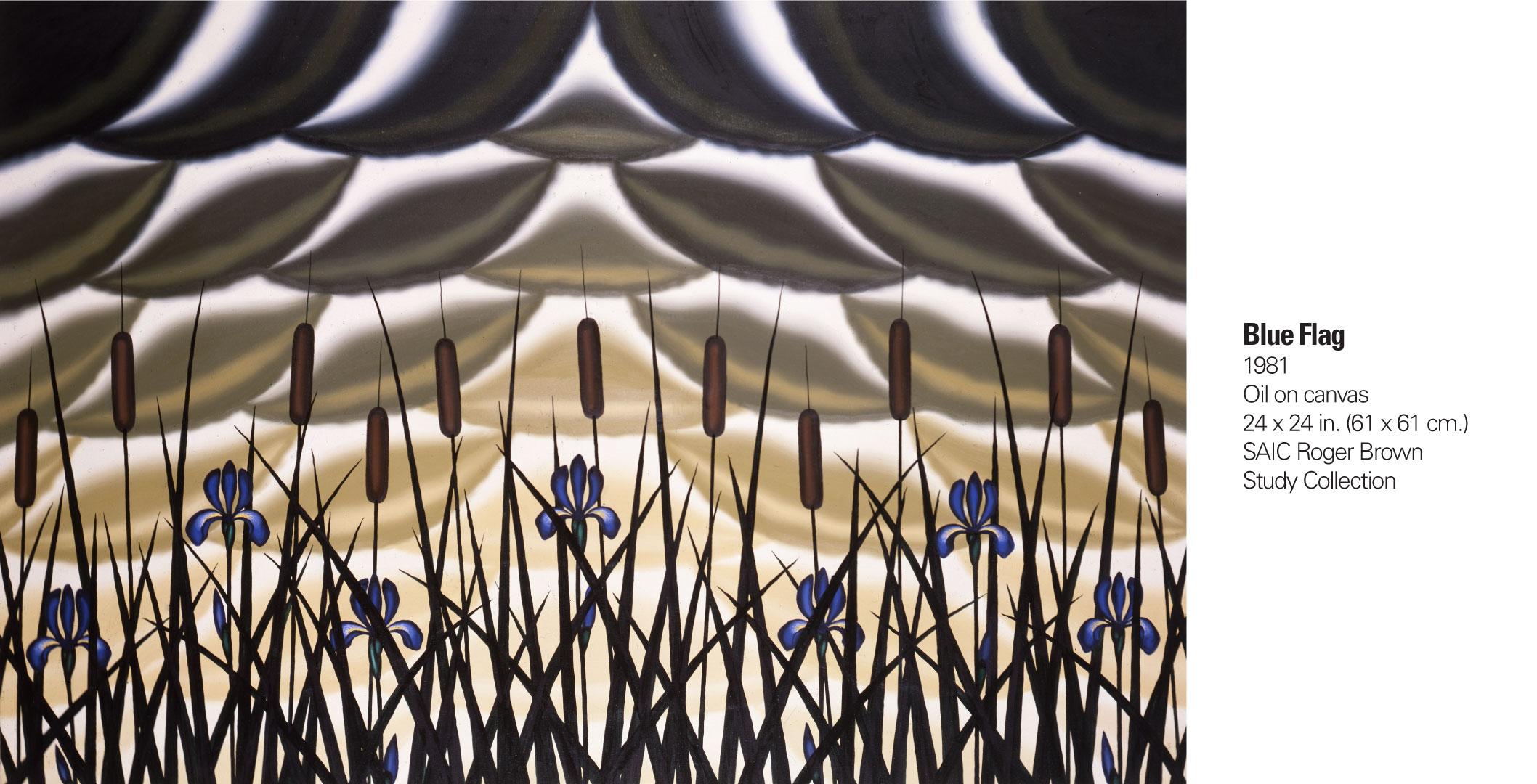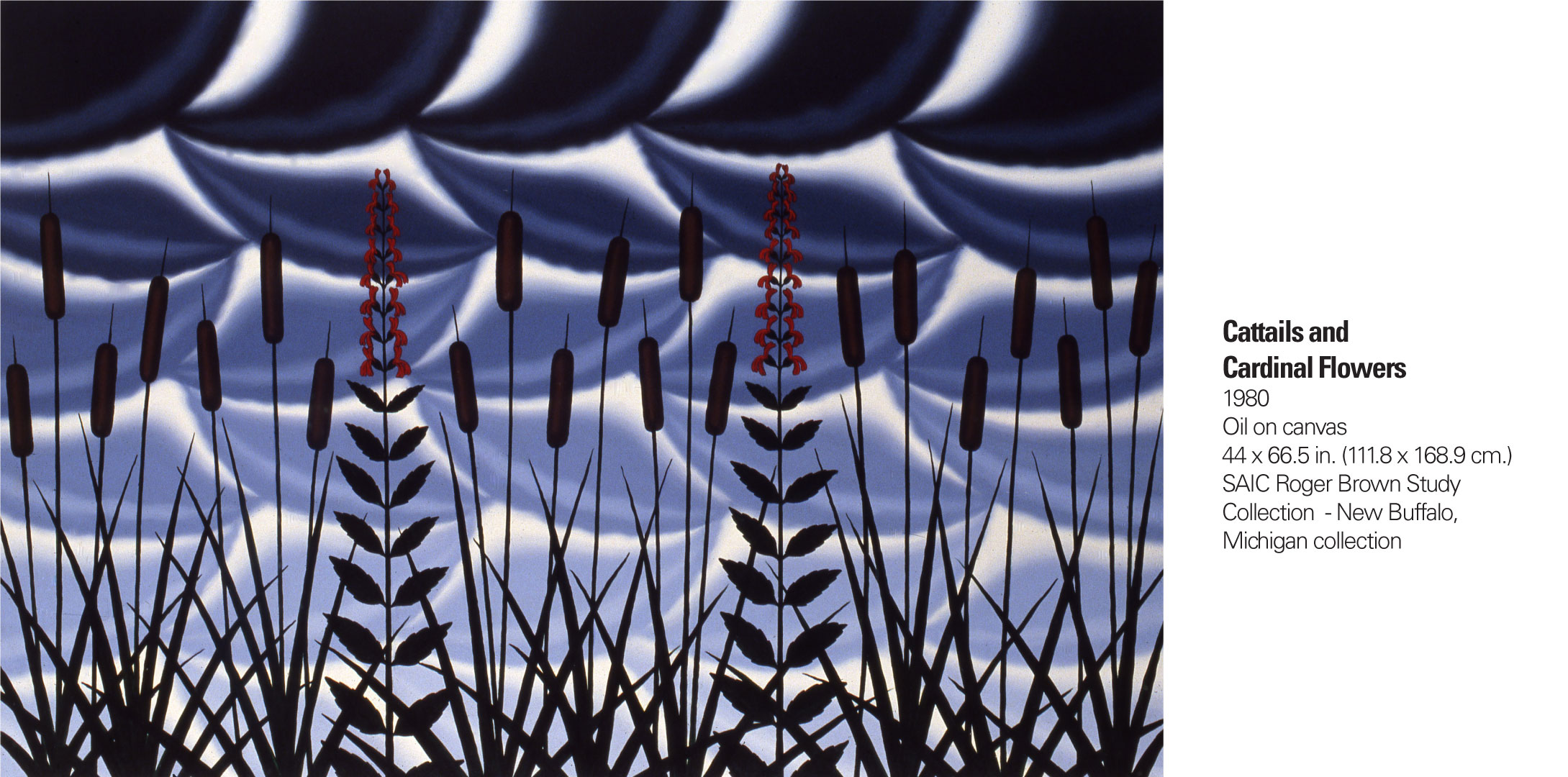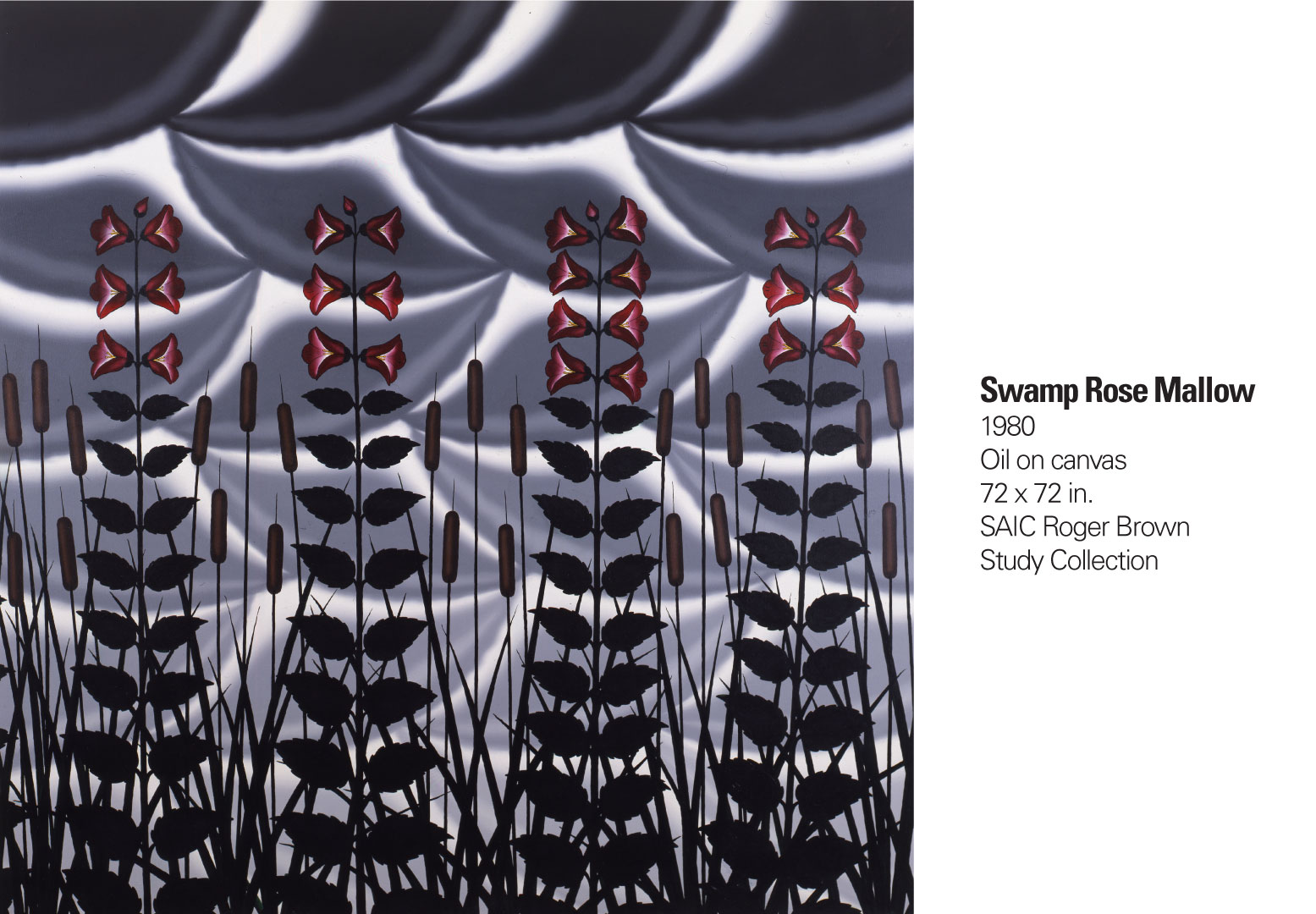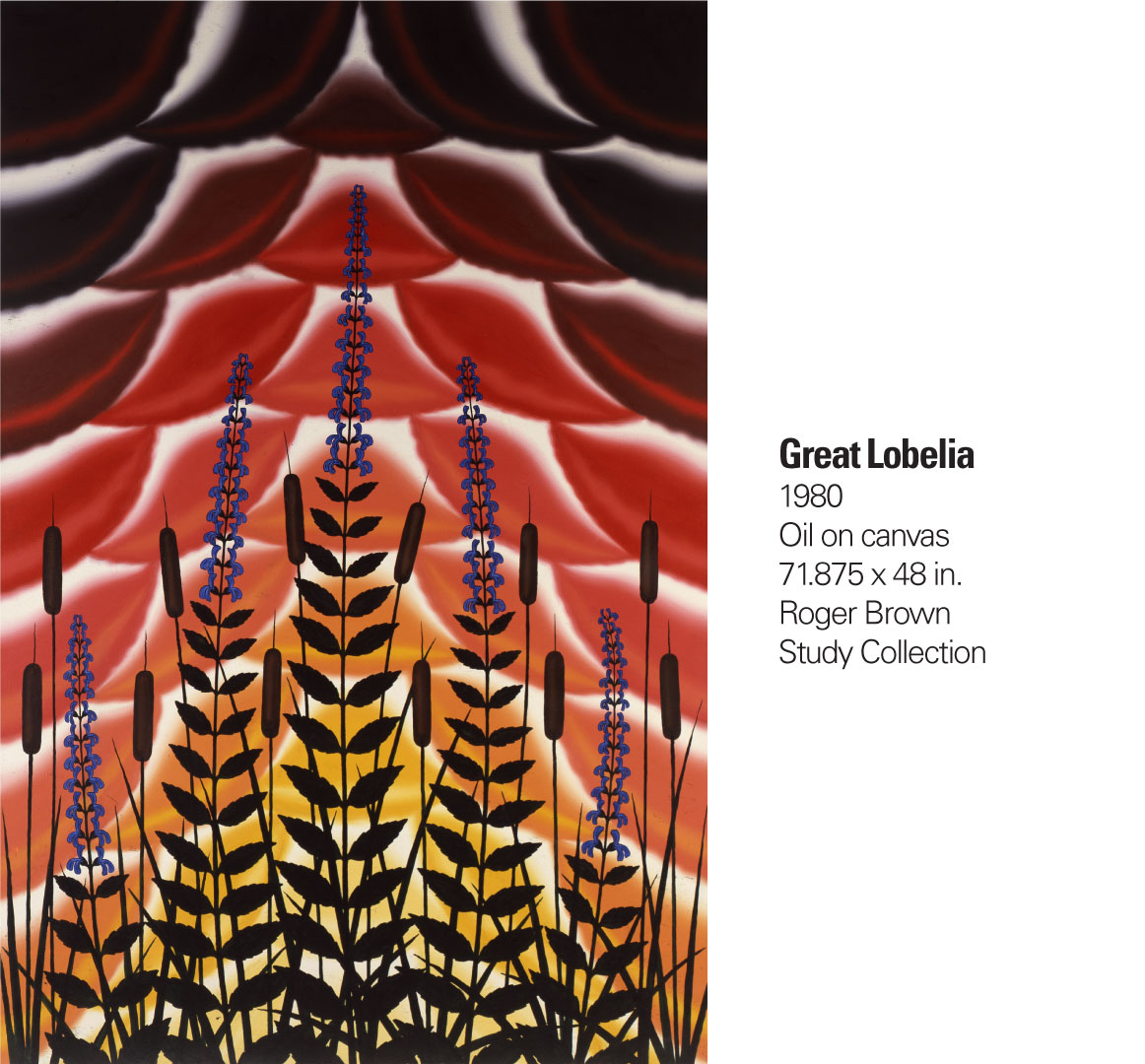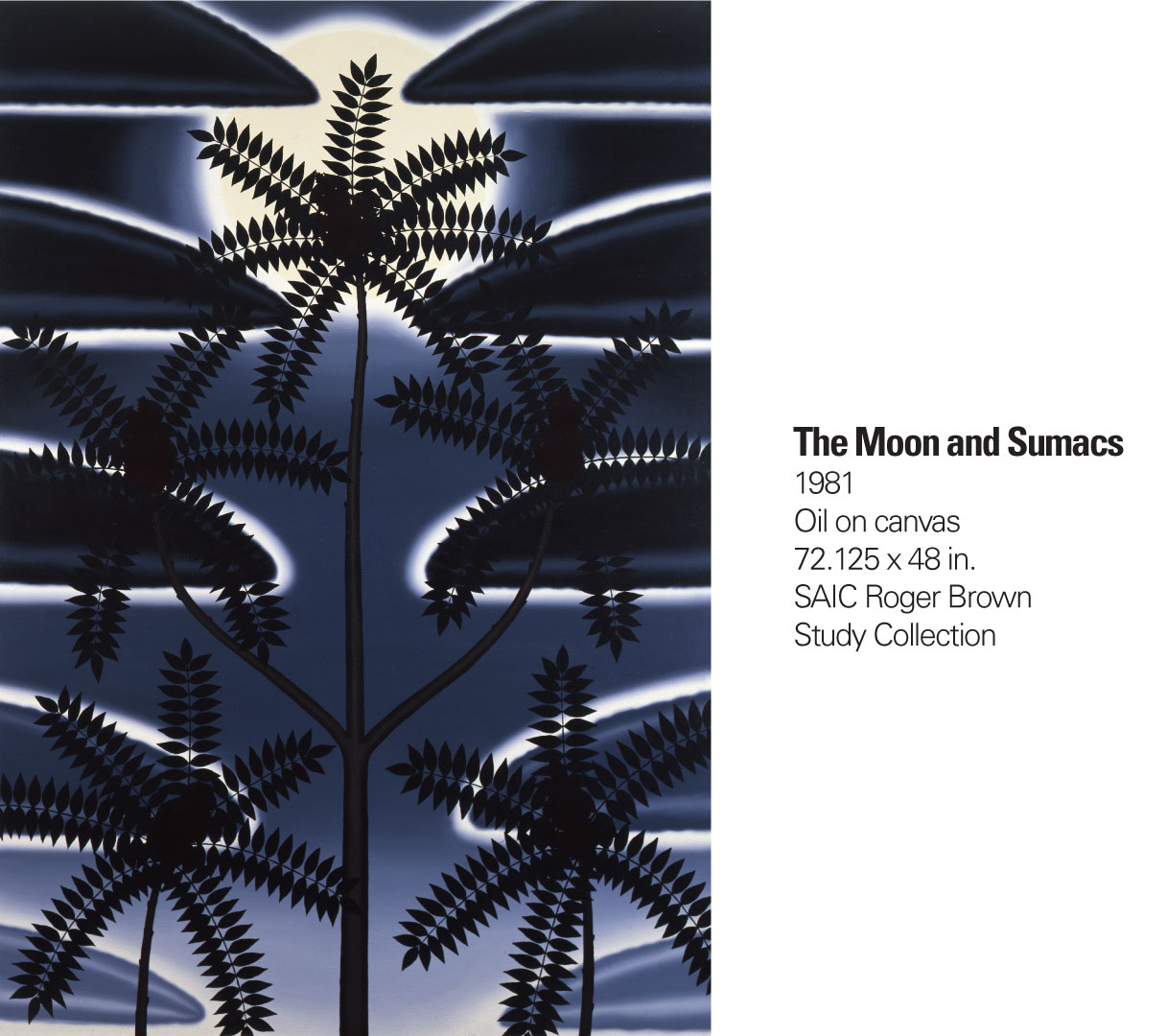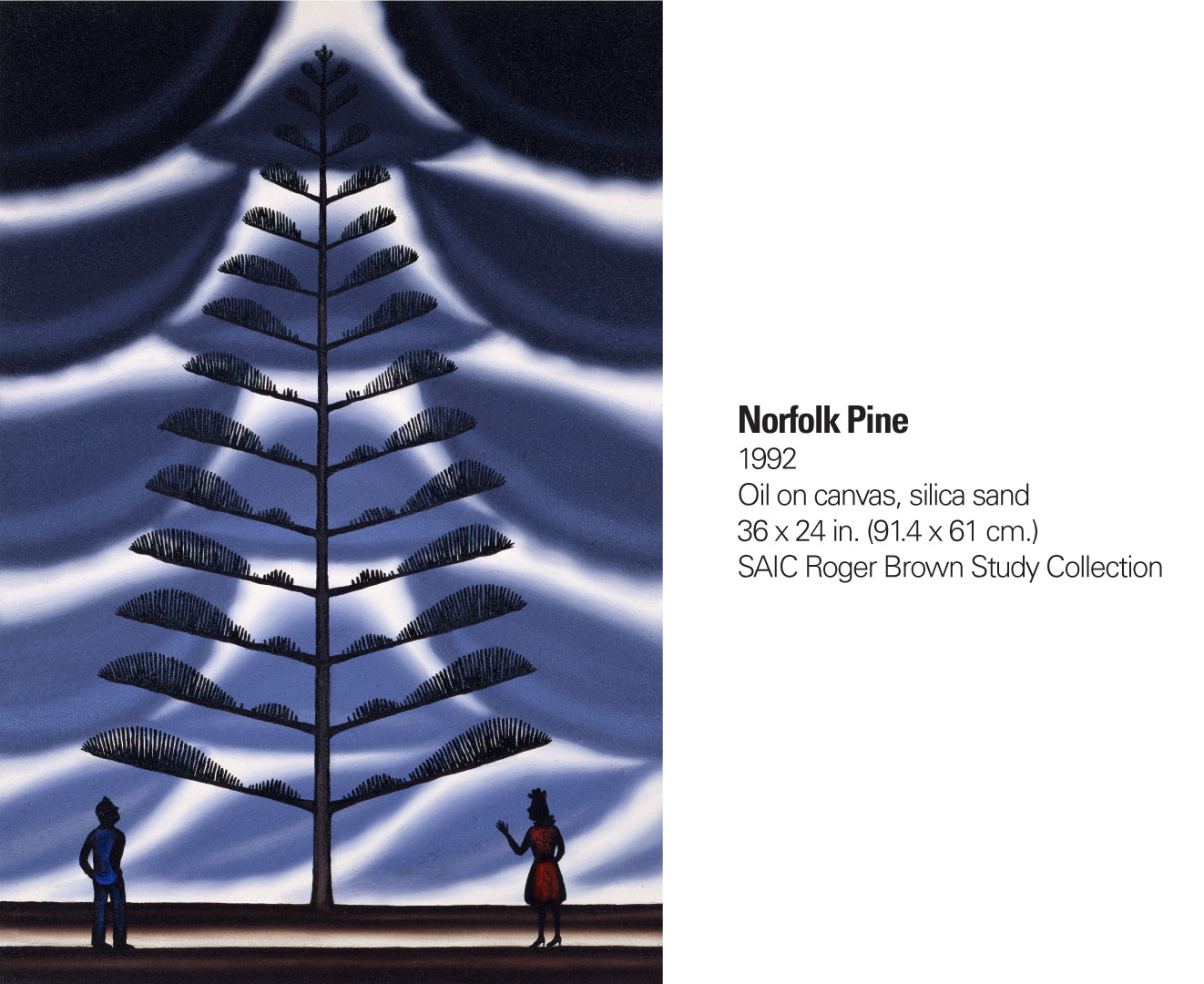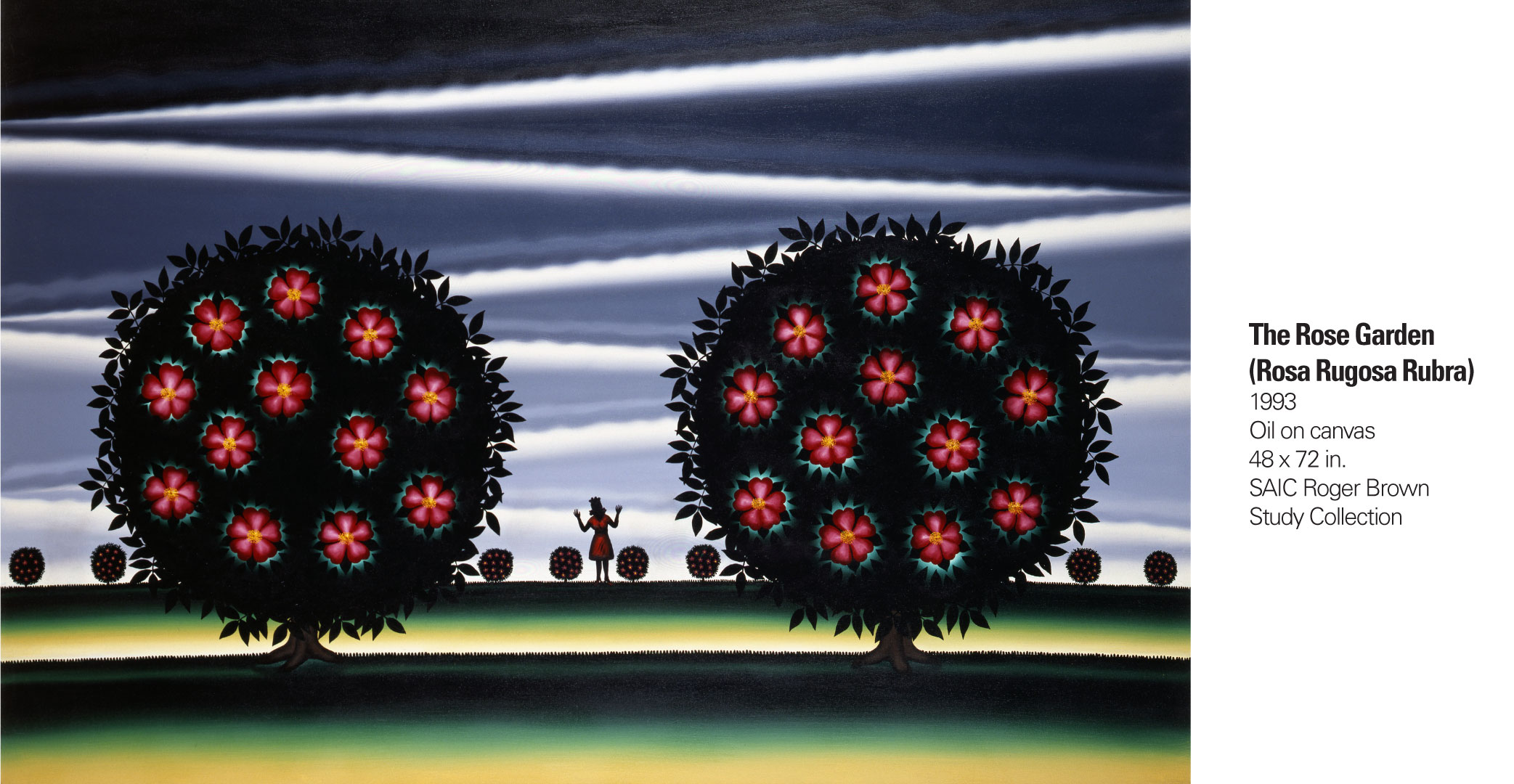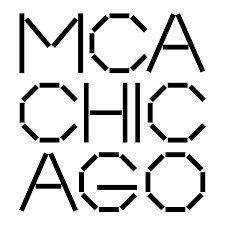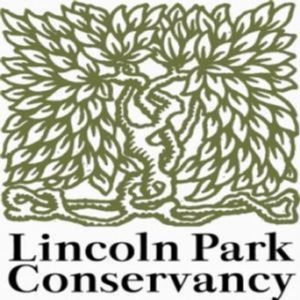Roger Brown
1941, Hamilton, AL – 1997, Atlanta, GA
Plant forms represent the realm of nature and at times, along with clouds, they represent something larger, more fundamental, than the human endeavor on earth.
– Lisa Stone
Roger Brown was born in Hamilton, and raised in Opelika, both in Alabama. In 1962 he moved to Chicago to study at the School of the Art Institute of Chicago (SAIC), where he earned his BFA in 1968 and his MFA in 1970. During this time Brown was engaged in the emergence of an energetic environment of art-making in Chicago which became known as Chicago Imagism. Brown initially emerged as a Chicago Imagist, a genre that he eventually grew beyond. He responded adroitly to the fabric of 20th Century life, in works that addressed a range of subjects and issues, including: natural, architectural, and urban landscapes, the dichotomy of nature and culture, disasters of all types, current and political events, social, religious, and popular culture, autobiographical, personal, and sexual issues, the art world in many guises, cosmology, mortality, history, mythology, transformation, transportation, and the weather. Known primarily as a painter, Brown also made prints, sculpture of found, assembled, and painted objects, sets and costumes for theatre and operas, and mosaic murals for architectural settings.
At SAIC he developed the discipline of finding and acquiring objects of interest that functioned as inspiration and source material, and an approach to his “artists’ museum” home/collection. He required a stimulating, object-filled environment to feed and support the demanding work of being an artist. His creative life entailed creating home/studio/garden/collection environments, in Chicago, Michigan, and California, as well as home and garden settings that were never realized beyond drawings and plans. In two gifts and a bequest he gave SAIC his three homes and collections, and all artworks unsold at the time of his death. His Chicago home environment became the Roger Brown Study Collection of SAIC in 1997.
Brown’s rich artistic career was at once intensely original and personal, while also exemplifying a significant aspect of Chicago’s art history, which has considerable impact on our art culture, in and beyond Chicago. Brown’s exhibition history is extensive. He was represented by the Phyllis Kind Gallery in Chicago and New York, and his work was shown in numerous solo and group exhibitions around the country and abroad. Major retrospectives of his work were mounted at the Montgomery Museum of Fine Arts in 1980, and at The Hirshhorn Museum and Sculpture Garden in 1987. His last solo exhibition of paintings was in 1997 at Phyllis Kind Gallery in Chicago. He is represented in many major museum collections including the Art Institute of Chicago, Museum of Contemporary Art (Chicago), Metropolitan Museum of Art, Whitney Museum of American Art, Museum of Modern Art, Corcoran Gallery of Art, High Museum of Art, Milwaukee Art Museum, and the Scottish National Gallery of Modern Art.
Roger Brown in Horto
Roger Brown looked to the grand arc of history for subject matter. On occasion stepping outside his own time, he grappled with archetypal and mythological themes, but he was always deeply engaged with things on earth: nature and natural forms, horticulture, and an evolving set of shrubs, trees, flowers, and grasses that he was particularly drawn to. These became stylized leitmotifs in his paintings and prints.
Brown engaged natural elements in his work, visually, compositionally, and conceptually. Plant forms represent the realm of nature and at times, along with clouds, they represent something larger, more fundamental, than the human endeavor on earth. In his earliest mature work many paintings are punctuated with rounded conifer shrub forms, a kind of shorthand for nature pruned, controlled, suburbanized. His love and attention to conifers grew. He incorporated several varieties of conifers into many paintings in the 1970s and 80s, at times focusing on specific plants, such as Blue Rug Juniper (1983), a common plant that nonetheless is cause for astonishment. He incorporated the splay off branches of multi-leaved sumac trees–-always in silhouette––to bring the rhythmic pulse of nature into hundreds of compositions. Considered a weed tree by many, Brown elevated the sumac into a significant player on the stage of human life on earth.
Beginning in the late 1970s Brown spent much time in his second home/studio/garden: a pair of steel and glass Modernist buildings nestled in the dunes in New Buffalo, Michigan. This rich exposure to the natural world inspired about 40 paintings focusing on the dunes landscape––its plant, bird, insect, and animal life––and the weather effects of the Lake Michigan shoreline.
In the late 1980s, tiring of Chicago winters (and, we surmise, the social pressures of the art world), Brown searched for a place to build a winter studio in a warmer climate. He was drawn to the southern California town of La Conchita. In addition to the lush local flora, dozens of exotic varieties of bananas were grown in La Conchita, despite the prevailing view that banana farming was not viable in California. Brown may have intuited that it was a good place for a garden.
In a surprise departure from his previous work with plants and gardens, Brown first created an austere, Asian-style raked gravel garden with islands of rock and subtle greenery, alongside his Spartan trailer. He lined the east border with rose shrubs in a stone bed––beginning, we think, his fervent interest in rose cultivation that was fully explored in his New Buffalo, Michigan garden, where he planted over 400 rose shrubs in many varieties in 1993 and 1994. His interest in roses was further expressed in his sequence of four Rosa paintings made in 1993 and 1994.
Moving to California from the Midwest, where gardening and attention to plants was intertwined in his creative life, Brown entered a year-round growing season and an expanded palette, including desert plants. He adapted quickly to the regional, casual habit of allowing plants and planters and planted pots and plantings, all to accumulate and grow and flourish in impromptu arrangements, both casual and formal. Brown’s La Conchita garden evolved through a few distinct styles and stages of growth; working on and in it was closely linked to and reflected in his paintings from these years. Brown filled out the side and rear gardens with a combination of desert and deciduous plants and flowers, including white roses, calla lilies, varieties of agave, prickly pear, barrel cactus, columnar cactus, euphorbia, cholla, aloe, and other plants, arranged among rocks and plinths, planters, and garden sculpture. Brown’s composition had a pleasing rhythm of ground-hugging and sky-reaching plants that quickly grew to surround and enclose the space in a kind of Arabesque, private garden.
Brown created a series of five sublime paintings of bonsai in 1996. Surely related to his cultivation of bonsai in his La Conchita garden, these paintings reverse the scale of bonsai as miniature trees, positioning miniature humans against monumental bonsai. Brown imbued these works with the feeling of a departure into a different realm, a different dimension.
The second to last drawing in Brown’s final sketchbook, which includes sketches from 1993 to 1997, presents a corner of a single-story clapboard house situated in a grassy landscape: home and garden. An arched trellis frames a figure standing on the far side of this garden gate, facing away, shadow falling forward. Brown knew he was leaving his garden shortly, and left us with this profound image, a frozen moment of leaving behind, and facing what lies in the distance.
In August 1996 Brown began work on a visionary architectural / horticultural landscape––1224 Glenn Street–– designed specifically for land adjacent to his childhood home––where his parents still resided––at 1224 Glenn Street, Opelika, Alabama. The design is a bird’s-eye view of the United States, with plants and landscape features representing the various regions. He planned to move a house into this garden, located approximately where Opelika, Alabama would be, on the U.S. map.
An exhaustive study of Roger Brown’s affinity for horticulture and his artworks expressing this love has yet to be undertaken.
Lisa Stone, Curator
Roger Brown Study Collection
The School of the Art Institute of Chicago
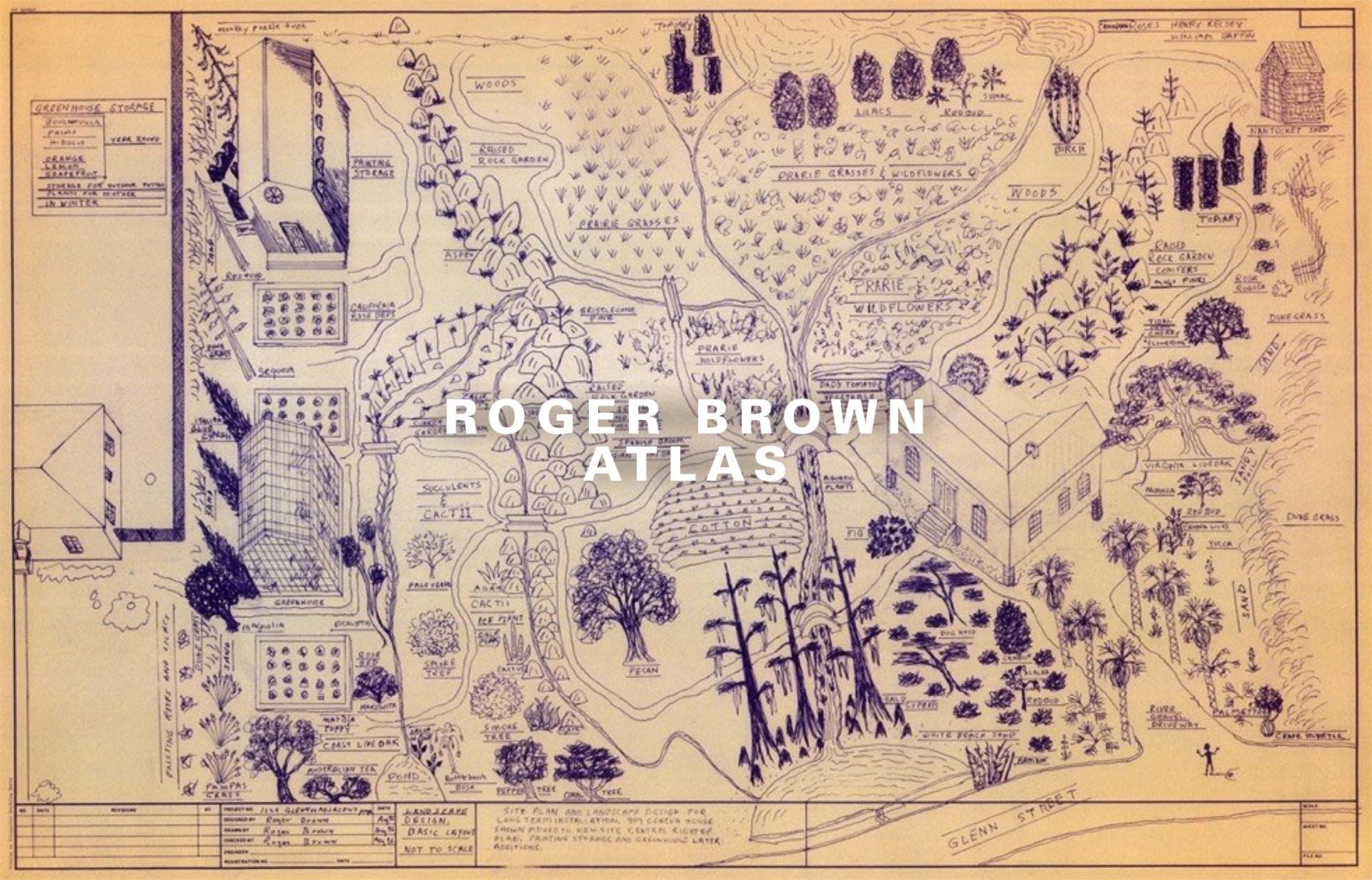
Sumac
Botanical name: Rhus typhina
Common Names: Staghorn sumac
Family: Anacardiaceae
Native Locale: Chicago area, Illinois, North America
Hardiness Zone: Zone 4 – 8
Lobelia
Botanical Name: Lobelia Cardinalis
Common Name: Cardinal flower
Family: Campanulaceae
Native Range: Americas
Hardiness Zone: 3 – 9
Cattail
Botanical Name: Typha Latifolia
Common Name: broadleaf Cattail
Family: Typhaceae
Native Range: North America, Europe, northern and central Asia, northern Africa
Hardiness Zone: 3 – 10
